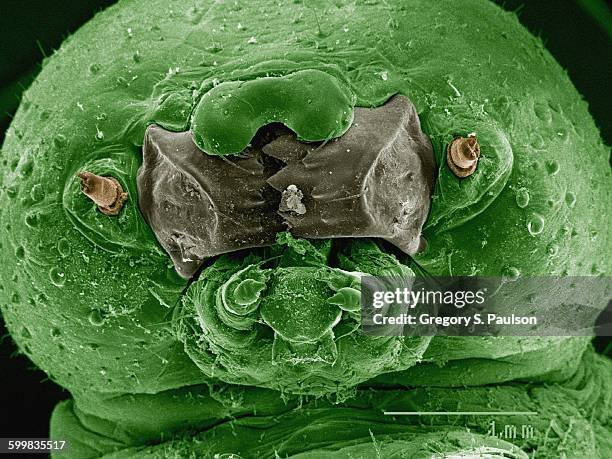
Imagine sitting in class, surrounded by friends, and instead of just reading about insects, you’re holding one in your hands! That’s the kind of magic hornworms bring to the table. They provide a tangible connection to scientific concepts, making the study of insects less abstract and a whole lot more fun. So, let’s dive into how hornworms can transform your entomology lessons and why they’re such an excellent choice for educators.
What Are Hornworms?
Hornworms are the larval stage of the sphinx moth, and they’re known for their distinct appearance. Typically, they have a vibrant green color with a horn-like protrusion on their rear. This horn isn’t just for looks—it adds a unique flair and can even deter predators.
These caterpillars are commonly found feeding on plants in the nightshade family, particularly tomatoes and peppers. This is why you might hear them called *tomato hornworms*. It’s interesting to note that while they can be a nuisance for gardeners, they are incredibly valuable in an educational setting.
In the classroom, observing hornworms can help students learn about metamorphosis, the process by which they transform from caterpillars to moths. Watching this remarkable change unfold is like witnessing magic—students get to see firsthand how these creatures grow and develop.
Why Use Hornworms in Classrooms?
Incorporating hornworms into your entomology classes provides multiple benefits. First off, they serve as an engaging hands-on learning tool. Students can observe their behavior, feeding habits, and life cycle stages up close. This kind of active learning enhances retention far more than just reading from a textbook.
Moreover, hornworms are relatively easy to care for. They thrive on common plants, and setting up a habitat for them is straightforward. You can even create a mini ecosystem in your classroom, which can be a fascinating project for students. It teaches responsibility as they care for live specimens and creates an immersive learning environment.
But perhaps the most compelling reason to use hornworms is their role in sparking interest in entomology and the broader field of science. When students interact with live insects, it can ignite a passion for biology that lasts a lifetime. They might even find themselves wanting to explore careers in science, conservation, or agriculture.
Setting Up a Hornworm Habitat
Creating a suitable habitat for hornworms in your classroom is easier than you might think. Here’s a quick step-by-step guide:
- Choose a container: A simple plastic terrarium or a large jar with a lid will work well.
- Add substrate: Place a layer of paper towels or soil at the bottom for easy cleaning and to retain moisture.
- Provide food: Since hornworms love tomato and pepper leaves, include these in their habitat. You can buy them or grow your own!
- Ensure ventilation: Make sure to poke small holes in the lid to allow for air circulation.
Once your habitat is set up, you can introduce the hornworms. Watching them eat and grow will be exciting for the whole class. Just remember to keep their environment moist but not soggy!
Life Cycle Observations
One of the coolest parts about using hornworms in an entomology class is their life cycle. They go through four stages: egg, larva, pupa, and adult moth. Each stage offers unique learning opportunities:
1. Egg Stage: You can discuss where hornworms lay their eggs and how they protect their young.
2. Larva Stage: This is where students get to observe the hornworms as they grow and eat. They can even measure their growth, documenting changes over time.
3. Pupa Stage: Once they’re ready to transform, the hornworms will pupate. This is a great chance to explain the process of metamorphosis.
4. Adult Moth: Finally, when they emerge as moths, students can learn about their roles in ecosystems, such as pollination.
By tracking these stages, students can gain insights into the wonders of insect biology and the importance of each stage in the life cycle.
Engaging Activities with Hornworms
To make the most of hornworms in your classroom, consider incorporating a few engaging activities. Here are some ideas:
- Growth Journals: Have students keep journals where they record observations about the hornworms’ size, behavior, and feeding habits. This enhances their observation skills.
- Metamorphosis Art: Encourage students to create art projects based on the life cycle of hornworms. This can help solidify their understanding in a creative way!
- Group Discussions: Facilitate discussions about the environmental impact of pests like hornworms and what this means for agriculture. It bridges entomology with real-world issues.
These activities can not only enhance learning but also promote teamwork and critical thinking.
Common Challenges and Solutions
Of course, no classroom project is without its challenges. Here are a few common issues you might face when using hornworms and how to solve them:
1. Feeding Issues: Sometimes, hornworms can be picky eaters. If they aren’t eating, make sure you’re providing fresh, healthy leaves. If possible, try different plants to see what they prefer.
2. Temperature Control: Hornworms thrive in warmer environments. If your classroom is cool, consider keeping the habitat in a warmer spot or using a small heat mat.
3. Overcrowding: If too many hornworms are in one space, they may compete for food. Ensure you have only a few in each container to avoid stress and ensure everyone gets enough to eat.
Recognizing these challenges ahead of time will prepare you and your students for a smoother experience.
Using hornworms in entomology classes can truly transform the learning experience. They provide a hands-on, interactive way to explore complex biological concepts while sparking students’ curiosity about the natural world. Through observation and care, students gain not just knowledge but also a deeper appreciation for insects and their roles in our ecosystems.
So the next time you find yourself planning a lesson, think about adding hornworms to your curriculum. Trust me; it’s an experience that both you and your students will cherish. Plus, who wouldn’t want to say they’ve raised a caterpillar that turns into a moth? It’s a beautiful way to connect with life sciences and make learning memorable.

